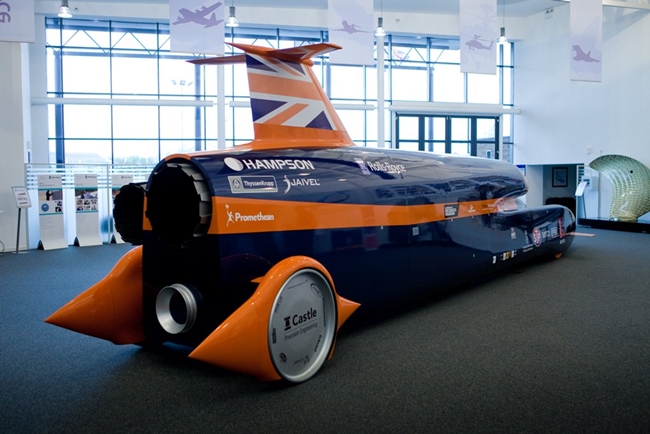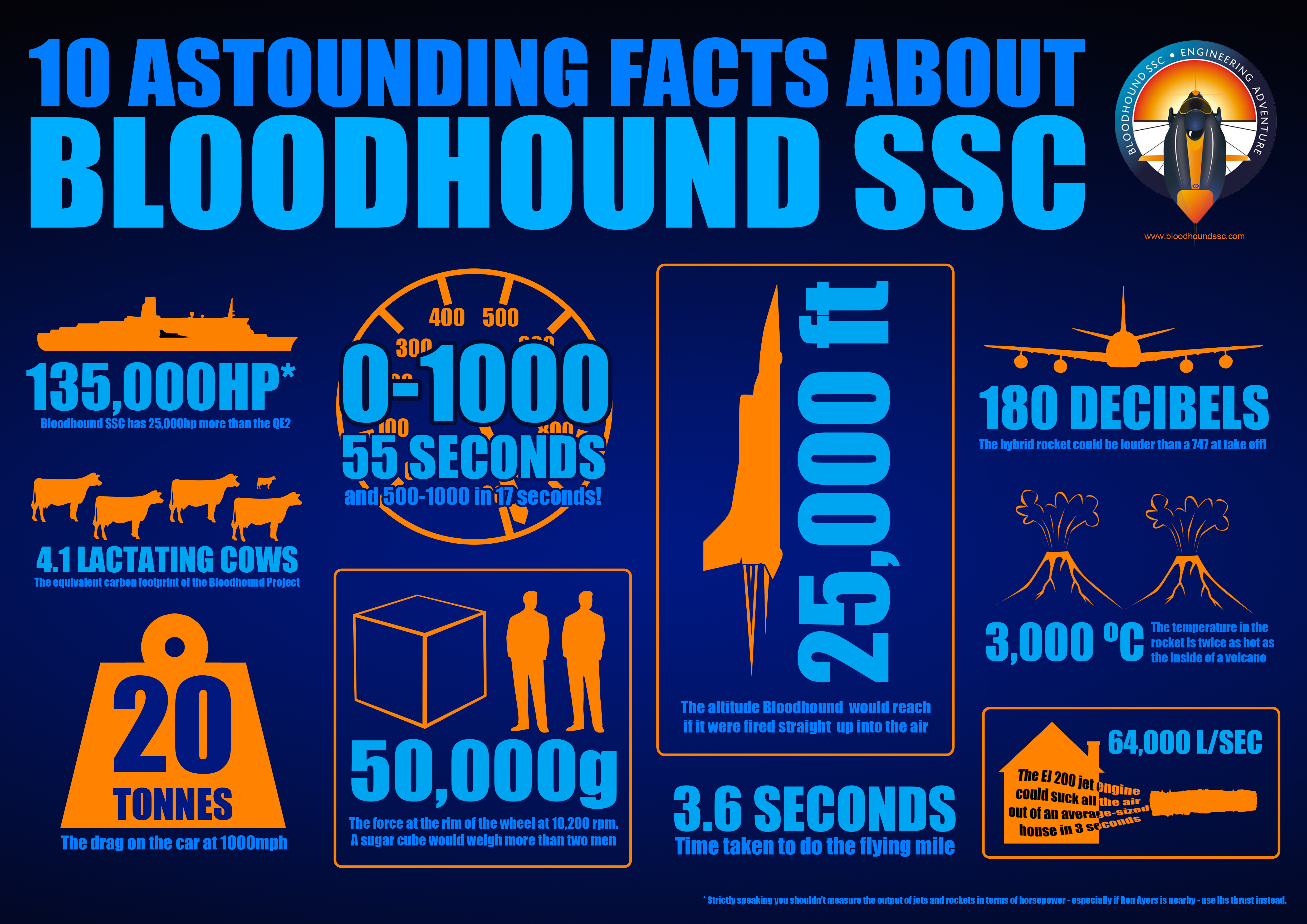SEO has entered a new era in 2026. AI tools are more powerful, users expect instant results and Google continues tightening its criteria for…
The Bloodhound SSC: everything you need to know about the supersonic car set to revolutionise tech

Firstly I’m not talking about the large scent hound originally bred for hunting deer and wild boar. You know, the four-legged furry thing, slightly gormless looking, slow, methodical, who will track you down should you be a villain, drug peddler or some such other low life. No, I’m talking about Bloodhound SSC: long, pointy at one end, massively powerful and bred specifically for supersonic speeds. Oh, and it’s a car, a SuperSonic Car.
What
The blokes at Bloodhound SSC Engineering Adventure refer to this vehicle as a car. Now let’s be honest, I think they’re stretching the limits of the word because the Bloodhound SSC is more rocket ship than car. And, its sole purpose is to reach the magic 1 000mph. Sure it has four wheels, but that’s about all it has in common with the vehicles we use every day to get to from A to B and back.
For starters its 14 metres long and weighs over seven tonnes. The front section consists of a carbon fibre monocoque similar to that of Formula 1 racer and is supremely rigid and secure forming safety cell for the driver. The rear section is a mixture of steel, titanium and aluminium using aerospace construction techniques.
Bloodhound SSC will produce almost 100 000 kilowatts of power via not one but three engines. First up is the Eurojet EJ200 turbofan normally found strapped to a Eurofighter Typhoon fighter jet, in the SSC it will produce approximately half of the necessary thrust needed to reach 1 600km/hour. For those of you not familiar with turbofan engines, here’s how they work: much like your car, air is sucked into the engine, compressed, fuel is then added which burns (spectacularly) and expands pushing the exhaust out of the nozzle at the back, producing thrust. Who is manufacturing this engine you might ask, who else other than Rolls Royce?

Not satisfied with just a turbofan engine, next up is SSCs rocket engine, which happens to be the largest of its kind ever made in the UK. In order to hit supersonic speeds the rocket will produce 25 000 pounds of thrust for 20 seconds.

Last but not least is the COSWORTH Formula 1 engine employed to not only provide SSC with essential hydraulic services but more importantly to drive the oxidizer pump which will supply 800 litres of High Test Peroxide to the rocket in just 20 seconds, that’s roughly 40 litres a second!

Why COSWORTH you ask, well, it’s has proven to be the most reliable (that and it British Sirrah!). Mounted backwards in the SSC it will be subjected to 3G acceleration for 40 seconds.
The wheels on this supersonic behemoth? Forged solid aluminium, each wheel weighs 95kg and will spin at over 10 000rpm and be subjected to 50 000 G at the wheel rim. Watch them being forged here:
It’s all well and good getting up to 1 600km/hour but how to slow down from these silly speeds? Remember the Bloodhound SSC has been built to be as slippery through the air as possible, making it extra tricky to slow. So, from roughly 1 200km/hour a first stage airbrake is deployed slowing the vehicle down to about 950km/hour, thereafter a drag inducing parachute pops out the back. Should that not work, a second one will deploy hopefully slowing things down to between 600km/hour and 400km/hour, after which ‘regular’ disc type brakes are applied to bring SSC to a standstill. Worryingly if all these systems fail (highly unlikely) they’ll only have the airbrake and track overrun to stop.

Who
Who might have the cojones big enough to pilot such a machine? Well none other than Andy Green. Full time fighter pilot in Her Majesty’s Royal Air Force and part-time four-wheeled speed freak extraordinaire. Green is no newbie to this Land Speed Record malarkey.
In 1994 he responded to an article in the Sunday Times which mentioned that Richard Noble — himself a Land Speed Record holder in 1983 — was looking for driver for Thrust SSC. Sixteen years on and with two Land Speed Records to his name Andy Green and Richard Noble (and a massive team of engineers and generally very clever people) will partner once again to achieve an outrageous 1 000mph (1 600km/hour), a massive 33% percent faster than the current 1 228km/hour record!
Where
None other than the Hakskeen Pan in the Kalahari Desert, Northern Cape Province. Why exactly would they choose South Africa? Well, there is a long complex answer to that question, but basically Bloodhound SSC is not suited to a salt surface such as the Bonneville Salt Flats in Utah USA, primarily because of the solid metal wheels. The two previous Land Speed Records were set at Black Rock Desert whose very smooth and very hard dry mud surface suited the steel wheels perfectly.
However a lack of rain and an increase in the use of the desert, principally by the Burning Man festival (damned hippies) has made the Black Rock Desert unsuitable for the Bloodhound SSCs record-breaking run. There were a few other locations held as backup however, eight in the US, one in Turkey, four in Australia and one in South Africa. (This location in the Northern Cape is not new to Land Speed Record attempts, in the 1920s Sir Malcolm Campbell attempted the record at the nearby Verneukpan in his Napier-Campbell Blue Bird featuring a 22.3 litre W12 Napier Lion engine.)
After a year and a half of searching it ultimately it came down to the Hakskeen Pan, but even this location was not without problems, namely a dirt road slap bang across the middle of the pan. Good news though, because a tar road was built to the side of the pan, meaning a perfect 19km long and 5km wide, very hard and very flat racetrack was available. Besides that pesky dirt road and surface debris of course. Not a problem though, because since 2009 a local team have been clearing it to make it even flatter and harder than before. Go team South Africa!
When
The Bloodhound SSC is hopefully due to set its record-breaking attempt in the third or fourth quarter of 2015
- Renderings: Siemens
- Images: Stefan Marjoram
- Infographics: bloodhoundssc.com



